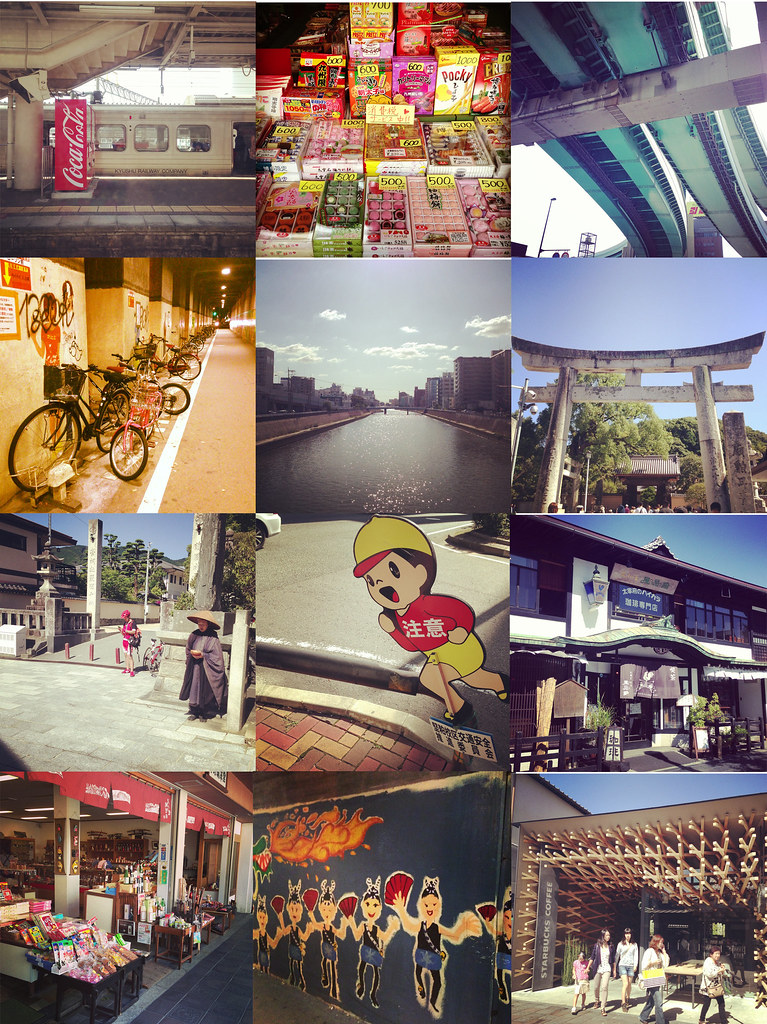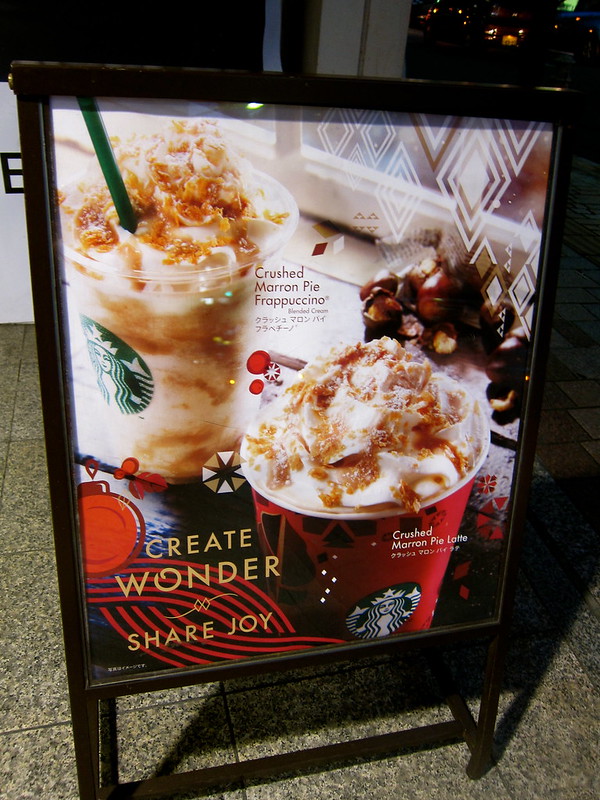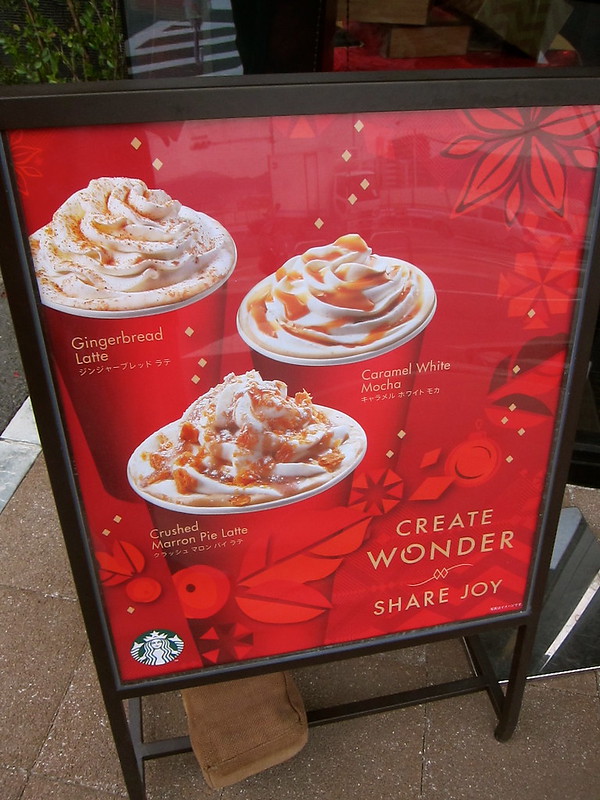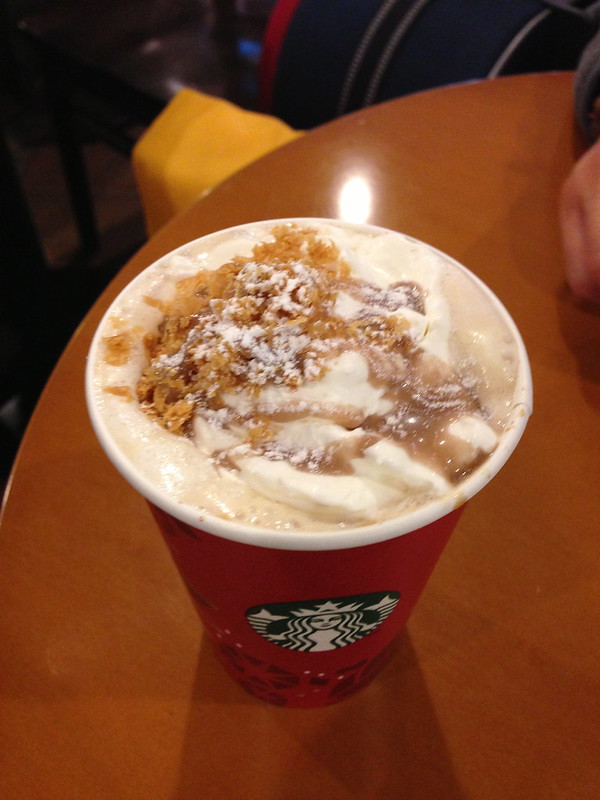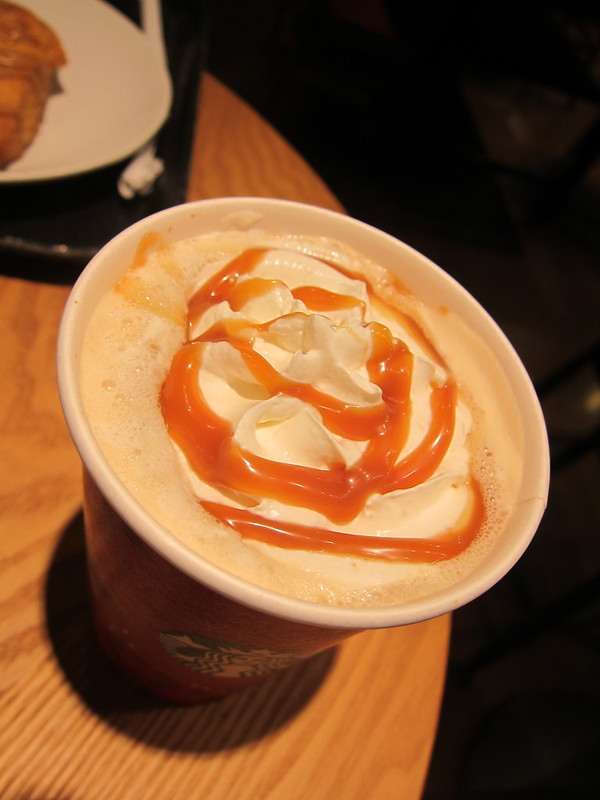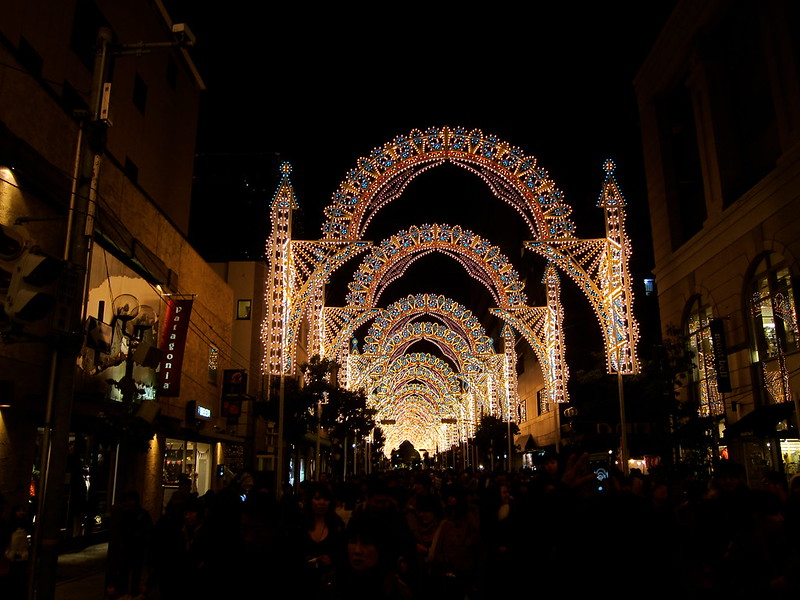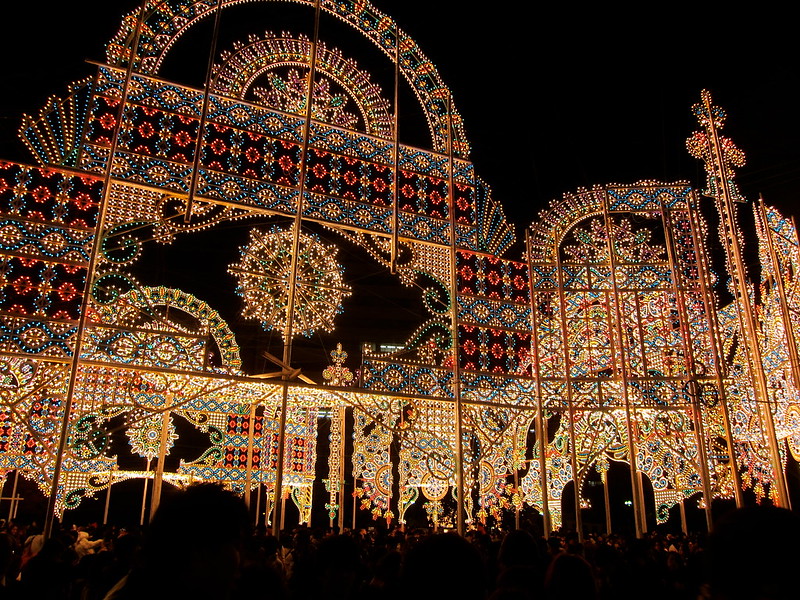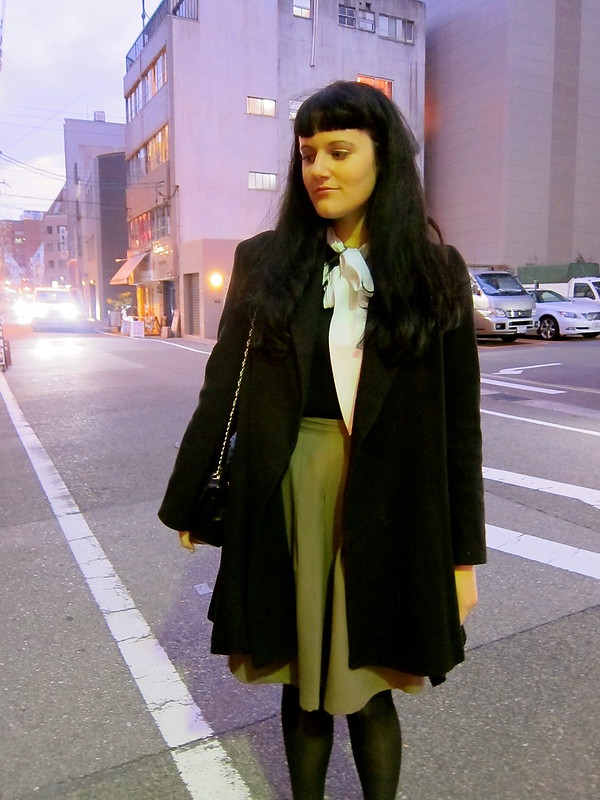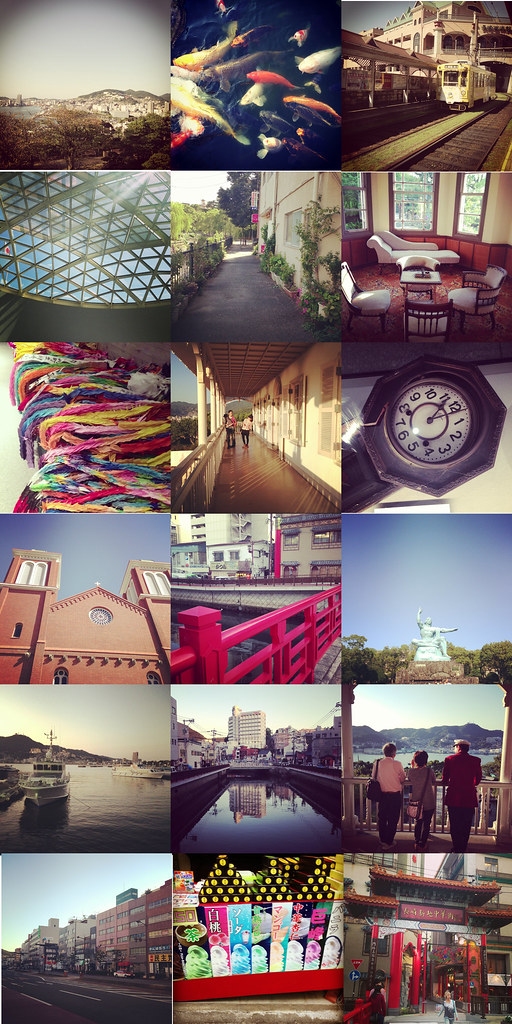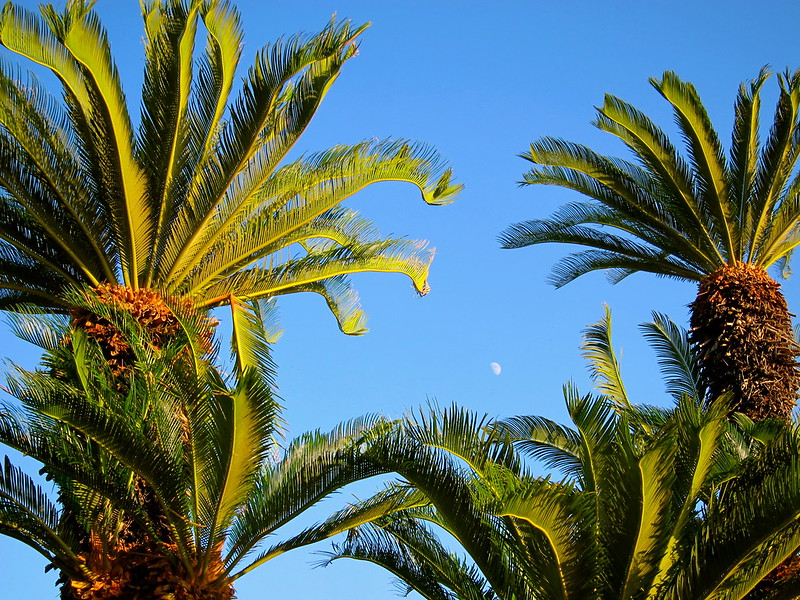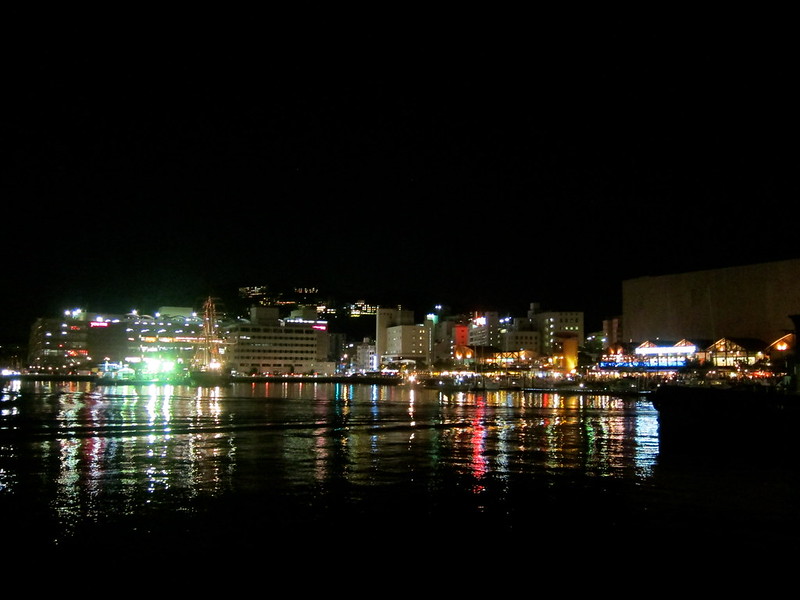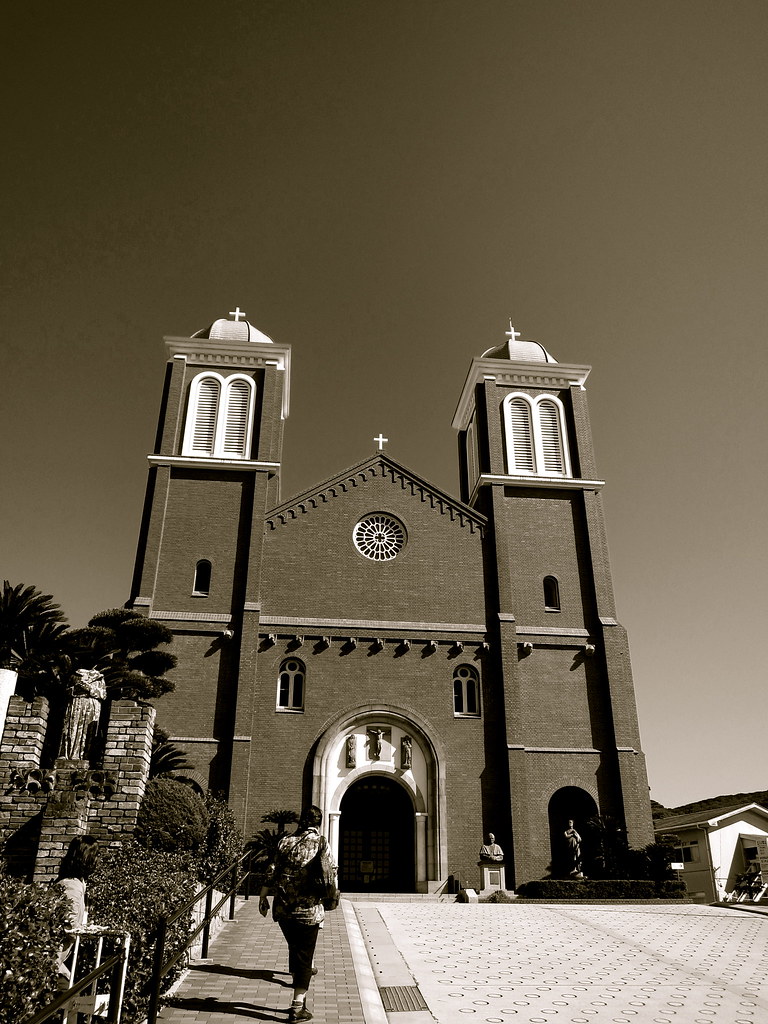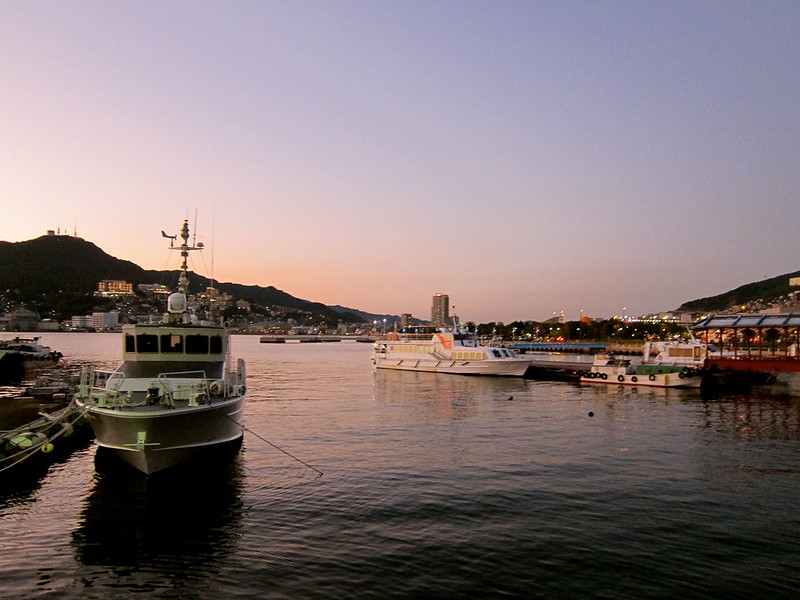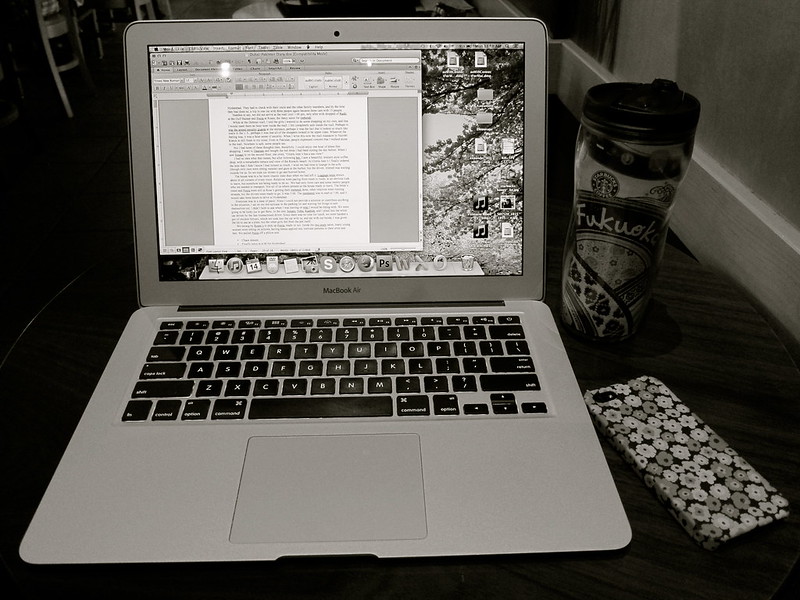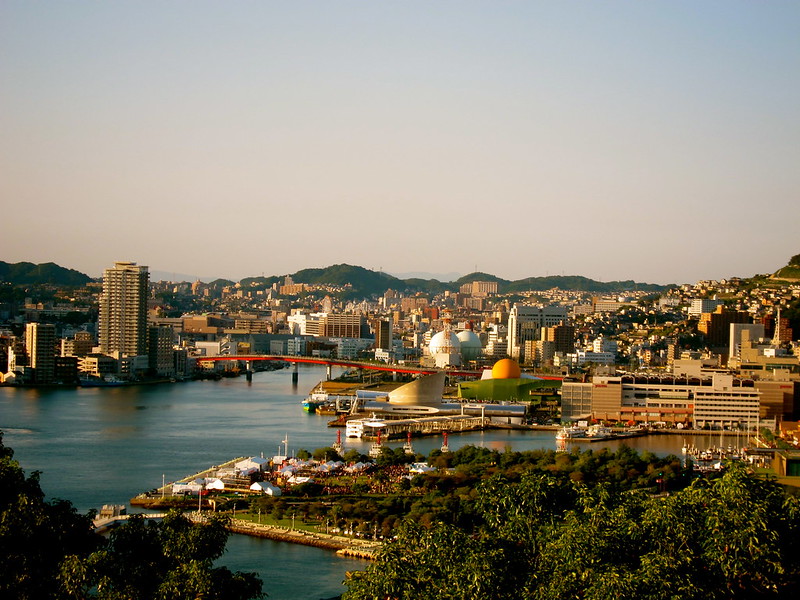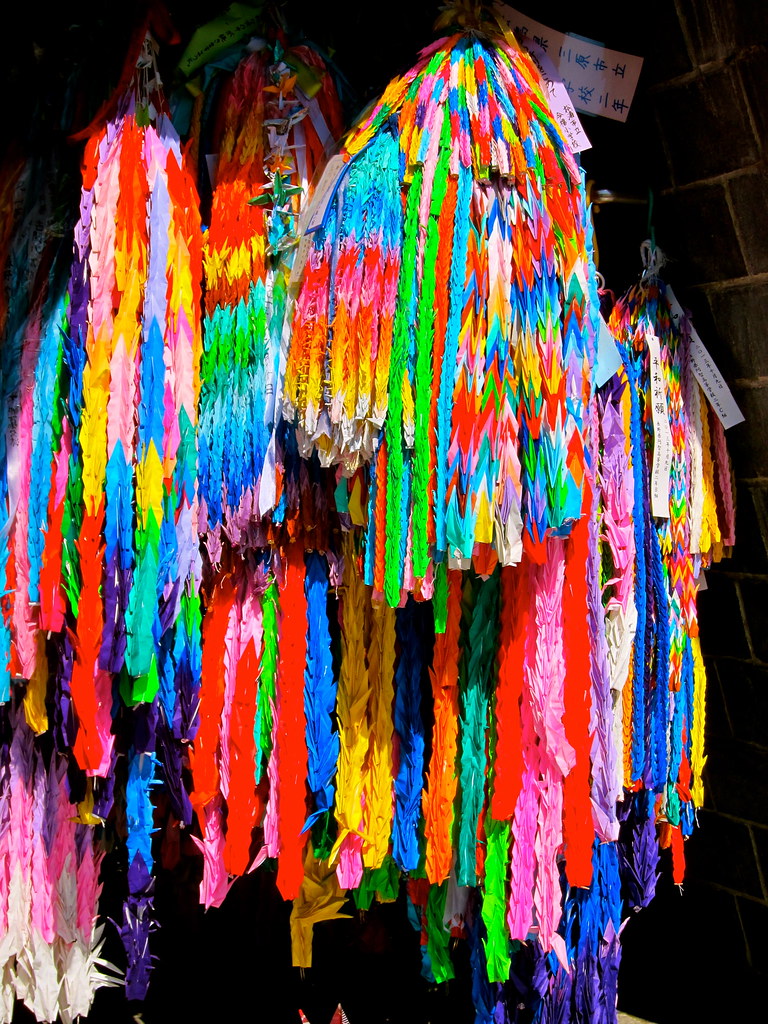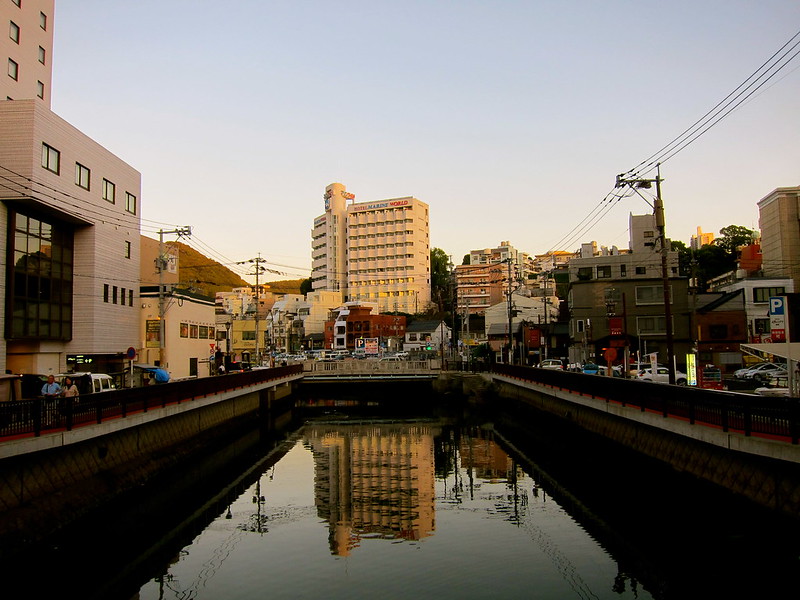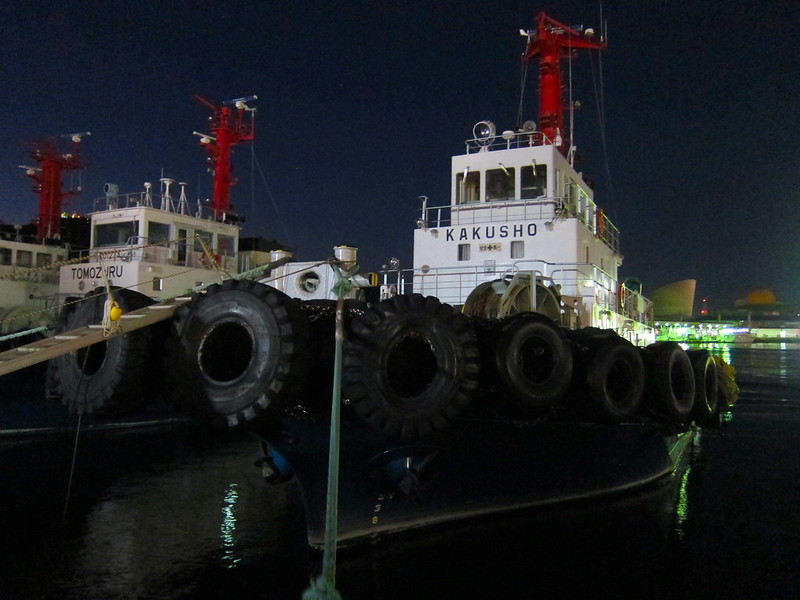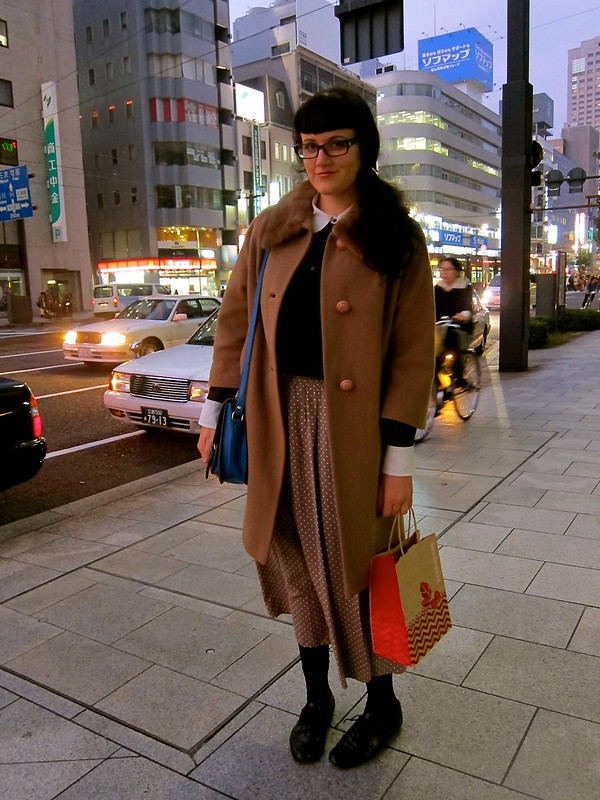Monday, December 30, 2013
Friday, December 27, 2013
Starbucks Holiday Season in Japan
Holiday season is my favorite time of year.
Not because of the romance in the wind, or the sound of
autumn leaves cracking under your feet.
Not because of Christmas or New Years, or even the long
holidays I have enjoyed in both the U.S. and Japan.
It’s because holiday seasons, means holiday drinks at
Starbucks.
For the past three years (2010-2012) I have had the good
fortune of being in the U.S. and having the Caramel Brulee latte, which is my
obsession from November to January each year.
Now I live in Japan, thousand of miles from the Caramel
Brulee latte, and I had to find a way to survive without it.
Fortunately Starbucks in Japan has it’s own unique
collection of holiday drinks.
Here’s the line up:
Crushed Marron (Chestnut) Pie Latte
Caramel White Mocha
Gingerbread Latte
I tried the Crushed Marron Pie Latte for the first time in Hiroshima. Impressions: hmm, kinda nasty. There are way too many toppings on this drink to make it drinkable. I especially disliked the nut shavings, which became tasteless and flacky, like bits of paper floating in the drink.
The Gingerbread Latte came in to save the day. True to its
name, it has all of the sweetness of gingerbread, with none of the spice (I
hate spicy drinks). This is definitely a holiday classic everyone can enjoy,
even if you are not a Starbucks fan.
I had high expectations for the Caramel White Mocha, since
it seemed to bare resemblance to the Caramel Brulee Latte. Unfortunately it
doesn’t take the place of my treasured holiday drink in the states, but it is
pretty damn good. Imagine a white chocolate mocha with caramel topping. You got
the idea.
After having each of these drinks in their hot version, well “light hot” version, I decided to try their frappuccino versions as well. Since Japanese does such a damn good job with Frappuccinos, (i.e. the Chocolate Brownie Frappuccino this summer, or the Roasted Almond Frappuccino this fall), I figured that this holidays variations would be just as good.
In general, I prefer to have a hot latte in the morning.
Maybe it’s American of me, but I don’t want the first thing I put in my mouth
in the morning to be a liquid cake. So I had my frappuccinos in the evening.
As expected, the Gingerbread Frappuccino was amazing. Similar to the Tazo Chai Frapp, it had a nice mixture of spice and creamy sweetness.
As expected, the Gingerbread Frappuccino was amazing. Similar to the Tazo Chai Frapp, it had a nice mixture of spice and creamy sweetness.

The Caramel White Mocha Frapp was a little disappointing, and tasted almost just like a regular Caramel Frapp.
If you are in Japan this winter, go for the hot version instead!

Tuesday, December 24, 2013
Christmas in Kobe
My first and only night in Kobe was spent here, at the Luminarie, the annual holiday light festival.
This event commemorates the earthquake in 1995. This was especially symbolic because I traveled to Kobe with a Japanese friend who was living in Osaka, just one hour away, at the time of the earthquake. Almost twenty years later, she vividly remembers that earthquake, like so many will remember the Tohoku earthquake of 2011.
This event commemorates the earthquake in 1995. This was especially symbolic because I traveled to Kobe with a Japanese friend who was living in Osaka, just one hour away, at the time of the earthquake. Almost twenty years later, she vividly remembers that earthquake, like so many will remember the Tohoku earthquake of 2011.
What you can't know from looking at these photos is the beautiful choral music that played through the streets as visitors walked under this cathedral of lights.
This will forever be one of my best holiday memories.
This will forever be one of my best holiday memories.
Sunday, December 22, 2013
Friday, December 20, 2013
What did I buy in Fukuoka and Nagasaki?
I've become a frugal traveler while in Japan, since my trips are now practically occurring every weekend.
Long gone are the days when I used to bring an empty suitcase to Japan and haul back my own body weight's worth of souvenirs and clothing. Now I have neither the space or the money for such indulgences, so I decided that I will commemorate my time in Japan by purchasing a pair of chopsticks from every town I visit. This is cheap, space-efficient, and practical (as I currently one have three pairs of chopsticks at my house).
In Fukuoka, I bought a little extra, mainly the Starbucks mug, which I had wanted for some time, and a unicorn luggage badge from Frapbois, which was too good to pass up.
Long gone are the days when I used to bring an empty suitcase to Japan and haul back my own body weight's worth of souvenirs and clothing. Now I have neither the space or the money for such indulgences, so I decided that I will commemorate my time in Japan by purchasing a pair of chopsticks from every town I visit. This is cheap, space-efficient, and practical (as I currently one have three pairs of chopsticks at my house).
In Fukuoka, I bought a little extra, mainly the Starbucks mug, which I had wanted for some time, and a unicorn luggage badge from Frapbois, which was too good to pass up.
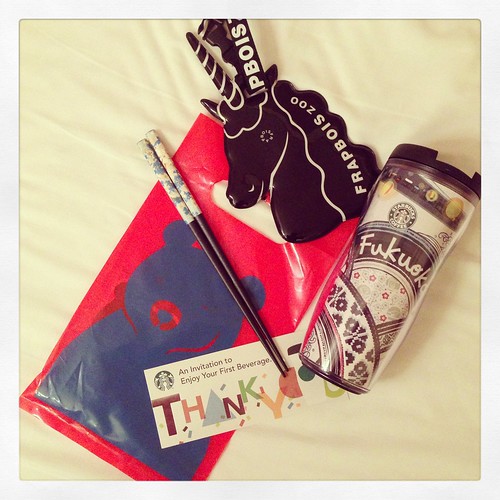 |
| Chopsticks, unicorn luggage badge, and Starbucks tumbler |
In Nagasaki I picked up two pairs of chopsticks near Glover Garden, as well as some edible omiage for my coworkers. The castella I saved for myself.
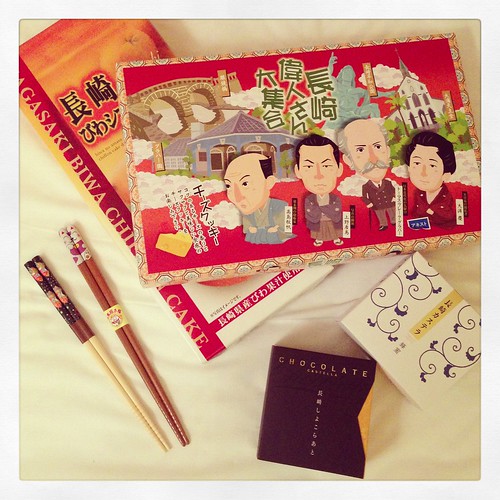 |
| Chopsticks, Omiage, and Castellas |
Wednesday, December 18, 2013
Tuesday, December 17, 2013
JET Interview
It can be hard to interview for one job while you are still
working at another. I mentioned that I was still employed at the time of my JET
interview, but fortunately the interview location was a ten minute walk from my
office, and my appointment was at 1:00 so I just “took a long lunch break.”
- Don’t worry about brushing up on your Japanese, unless you are applying for CIR.
- I’m sure I completed turfed the Japanese part of the application. They didn’t explain to me that it was bonus, and when they asked me to read out loud, I was so nervous that I just started annunciating every syllable, instead of silently scanning the passage then reading it.
- Be prepared to answer situational questions
- Envision yourself in the classroom, and know how you would handle certain situations. These could be both positive and negative. It’s ok, if you don’t have teaching experience. Remember, you’re an ALT, so you can always defer to the Japanese instructor, who has way more experience and understand the culture better than you do anyway. Don’t try to make up new rules or pretend like you know what you are talking about when you don’t.
- Be prepared to address uncomfortable or controversial questions
- I spent quite some time rehearsing responses to these types of questions. Fortunately, I only got asked one questions, and it was exactly the one I had prepared for. Basically, the interviewers may try to test your composure by asking you something way out of line. They want to see if you freak out or remain calm. They also want to make sure you are not going to make a scene in the classroom.
- Be professional, but personable
- This is still a job interview, proper dress is a must, but it’s not accounting for god’s sake. Show some character. Be fun, friendly, happy. Try not to take yourself too seriously. For me, smiling and chatting is the way I deal with being nervous. Before the interview I went around the lobby and introduced myself to all the other applicants. Chatting with people helped calm my nerves, and nothing is more nerve-wrecking than sitting in a silent lobby with a crowd of nervous people.
- Know your application
- I have been to many job interviews where my interviewer barely glanced at my resume, and I felt like I need to repeat basic details about my qualifications. This was not the case with the JET interview. My interviewed could practically quote from my application. Re-read it the night before, and be prepared to discuss any element of it in great detail.
- Have fun!
- This was a fun interview for me. From what I have heard, when JET interviews go wrong, you know it. And when they go right, you also know it. I left the interview feeling very energized and enthusiastic about the program. I was in a great mood all week. Then of course later on I started relaying my responses in my head and getting paranoid wondering if I said the right things.
Sunday, December 15, 2013
Why Write-ins Work

I have had the good fortune of being surrounded by creative people throughout my life.
In Portland, this meant that every winter season my friend and fellow writer Albert William and I would spend winter afternoons at Starbucks in Pioneer Square, writing, talking, and talking about writing. In the summer, we would take a road trip to the coast of Oregon and write in local cafes.
In Shimane, where I live without Albert William or Starbucks, this tradition has taken the form of weekly dinners with the only other two foreign residents in town. We three girls take up six seats at the bar counter of a local Cafe-Bar and write and talk while sipping lattes and eating Japanese versions of Italian food.
In Okayama I attended my first organized write-in for NaNoWriMo. After that experience I decided to talk about the importance of write-ins, which are basically social gatherings of writers. Being around creative people has influenced me in the best possible way, and I want to share a bit about the social aspects of being a writer.
First, I will list the advantages of a write-in:
1. Most importantly, you can exchange ideas and work out obstacles in the story, while sharing advice and inspiration.
2. The group atmosphere can help you focus. In my case, I work better in public places, although I know not everyone does. If you are around people who are also writing, it may help you to stay on track.
3. Social fuel: what I describe as the "feeling" of being productive. I know that if I stay home all day, even if I am writing or checking things off my to-do list, I still feel majorly unproductive. Going out, at least once a day, is necessary for me to feel like my life in progressing.
4. Being in public settings stimulates the senses, (at least for me). Sometimes the scene in the cafe creeps into your story subconsciously.
 However, there are also a few challenges in doing write-ins:
However, there are also a few challenges in doing write-ins:
1. Conversation, and too much socializing. This is especially difficult if you are meeting people for the first time. The social norms says that we have to sit and chat for a while before burying our faces in our laptop screens.
2. Everyone is working on different stories, topic, and content, and it can be distracting. Sometimes the fact that you may have nothing in common with a group can be more of a hinderance than a benefit.
3. Some places are sensory overload, especially if they are too loud or too crowded.
4. Finding a location for a big group of people for a long time is difficult. Most cafes have limited seating, especially for groups, and you usually can't make reservations.
So what's necessary for making a write-in successful? Here are my thoughts:
1. A table: having a laptop directly in front of my face keeps me looking at the screen instead of at other people. For this reason, I'm not very productive on a couch or in living-room environments.
2. Bar counters: sitting next to each other, instead of across from each other, limits conversation, without completely restricting it.
3. Endless lattes.
4 Time limits and breaks (max fours hours with a short break after two hours, for me).
Although NaNo has ended, I look forward to continue writing alongside my amazingly talented friends.
In Portland, this meant that every winter season my friend and fellow writer Albert William and I would spend winter afternoons at Starbucks in Pioneer Square, writing, talking, and talking about writing. In the summer, we would take a road trip to the coast of Oregon and write in local cafes.
In Shimane, where I live without Albert William or Starbucks, this tradition has taken the form of weekly dinners with the only other two foreign residents in town. We three girls take up six seats at the bar counter of a local Cafe-Bar and write and talk while sipping lattes and eating Japanese versions of Italian food.
In Okayama I attended my first organized write-in for NaNoWriMo. After that experience I decided to talk about the importance of write-ins, which are basically social gatherings of writers. Being around creative people has influenced me in the best possible way, and I want to share a bit about the social aspects of being a writer.
First, I will list the advantages of a write-in:
1. Most importantly, you can exchange ideas and work out obstacles in the story, while sharing advice and inspiration.
2. The group atmosphere can help you focus. In my case, I work better in public places, although I know not everyone does. If you are around people who are also writing, it may help you to stay on track.
3. Social fuel: what I describe as the "feeling" of being productive. I know that if I stay home all day, even if I am writing or checking things off my to-do list, I still feel majorly unproductive. Going out, at least once a day, is necessary for me to feel like my life in progressing.
4. Being in public settings stimulates the senses, (at least for me). Sometimes the scene in the cafe creeps into your story subconsciously.
 However, there are also a few challenges in doing write-ins:
However, there are also a few challenges in doing write-ins:1. Conversation, and too much socializing. This is especially difficult if you are meeting people for the first time. The social norms says that we have to sit and chat for a while before burying our faces in our laptop screens.
2. Everyone is working on different stories, topic, and content, and it can be distracting. Sometimes the fact that you may have nothing in common with a group can be more of a hinderance than a benefit.
3. Some places are sensory overload, especially if they are too loud or too crowded.
4. Finding a location for a big group of people for a long time is difficult. Most cafes have limited seating, especially for groups, and you usually can't make reservations.
So what's necessary for making a write-in successful? Here are my thoughts:
1. A table: having a laptop directly in front of my face keeps me looking at the screen instead of at other people. For this reason, I'm not very productive on a couch or in living-room environments.
2. Bar counters: sitting next to each other, instead of across from each other, limits conversation, without completely restricting it.
3. Endless lattes.
4 Time limits and breaks (max fours hours with a short break after two hours, for me).
Although NaNo has ended, I look forward to continue writing alongside my amazingly talented friends.
Thursday, December 12, 2013
Monday, December 9, 2013
Friday, December 6, 2013
Hiroshima Street snap
Took this snap on the streets in Hiroshima. Finally got a chance to wear this awesome vintage fur coat I bought at Goodwill in Portland for $15.
How I do miss Goodwill here....
How I do miss Goodwill here....
Coat: vintage from Goodwill
Blouse: American Apparel
Satchel: Steve Madden
Skirt: thrited from a used clothing store in Izumo
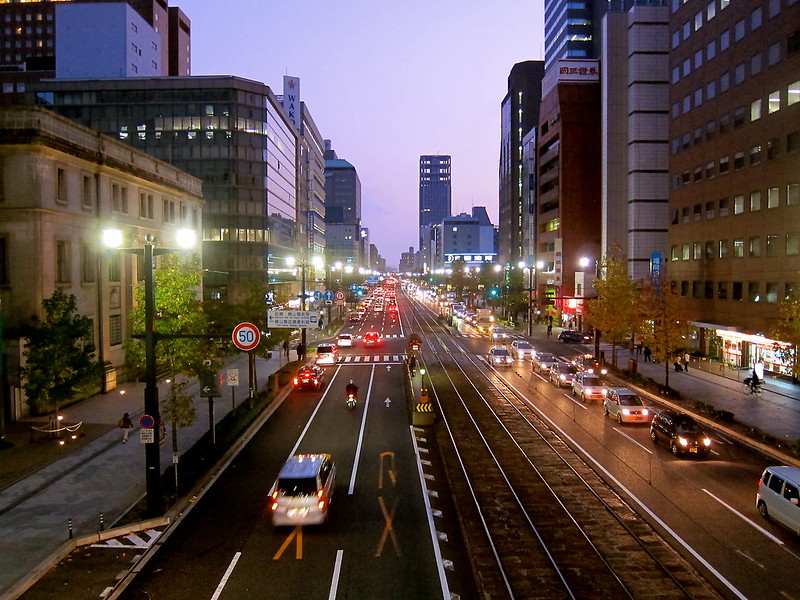 |
| Hiroshima at dusk. My favorite city. |
Tuesday, December 3, 2013
NaNoWriMo Victory!
This is what success looks like.
30 days, 50,413 words, and 3 bottles of wine later I have an almost-finished novel to my name.
On November 1st I took part in National Novel Writing Month and set the lofty goal of completing 50,000 words for my novel by the end of the month. It was my first attempt at NaNo, and I managed to pull it off.
How did I do it?
Well, when all is said and done, 50,000 words is really not that much. It takes effort, focus, and discipline, but it is 100% doable. I've heard a lot of people complain about how challenging NaNo is for people who work full-time or are just plain busy. However, having completed it myself, I am struggling to understand their point of view. Let me break it down:
30 days, 50,413 words, and 3 bottles of wine later I have an almost-finished novel to my name.
 |
| A toast to myself |
How did I do it?
Well, when all is said and done, 50,000 words is really not that much. It takes effort, focus, and discipline, but it is 100% doable. I've heard a lot of people complain about how challenging NaNo is for people who work full-time or are just plain busy. However, having completed it myself, I am struggling to understand their point of view. Let me break it down:
I managed to accomplish NaNo while:
- working 40 hours a week (8:00-4:00, plus one 7-day work week, and three late nights until 9:30 pm)
- going on one 2-night out-of-town business trips
- hosting an enormous house party
- making two weekend trips (Okayama and Hiroshima)
- running 5K every non-rainy day
- skyping with my family back home several times a week
- keeping my one-a-week dinner date with the only two foreigners in my town
- making a new friend and hanging out once a week
- taking days off from writing
- taking naps after work
So what's this myth of literary abandon? If I can still take naps and chill with my friends then it can't be all that intense, right? But you're probably wondering what I did give up to make NaNo happen, because, after all, if I was writing 50,000 words every month then I wouldn't need this event to motivate me. So here is a list of things forgone in order to accomplish NaNo:
- sleeping in on the weekends (was up by 9:00 every morning, when I usually sleep in until noon)
- blogging (I scheduled posts in advance during November)
- writing long emails to my pen-pals (sorry guys!)
- reading (I usually finish at least one book per month but not in November)!
So what does actually writing 50,000 words in one month look like? Here is my case:
So what does actually writing 50,000 words in one month look like? Here is my case:
Day
|
Date
|
Comments
|
Goals Words
|
Actual Words
|
Friday
|
1
|
work
|
1000
|
996
|
Saturday
|
2
|
work
|
1000
|
1011
|
Sunday
|
3
|
work
|
1000
|
0
|
Monday
|
4
|
no work!
|
4000
|
4591
|
Tuesday
|
5
|
no work!
|
4000
|
0
|
Wednesday
|
6
|
late night
|
500
|
2007
|
Thursday
|
7
|
work
|
1000
|
0
|
Friday
|
8
|
work
|
3000
|
2405
|
Saturday
|
9
|
Hiroshima
|
3000
|
2997
|
Sunday
|
10
|
Hiroshima
|
3000
|
0
|
Monday
|
11
|
work
|
1000
|
438
|
Tuesday
|
12
|
work
|
1000
|
2261
|
Wednesday
|
13
|
late night
|
500
|
959
|
Thursday
|
14
|
business trip
|
0
|
1620
|
Friday
|
15
|
business trip
|
0
|
0
|
Saturday
|
16
|
house party
|
1000
|
0
|
Sunday
|
17
|
no work!
|
4000
|
0
|
Monday
|
18
|
work
|
1000
|
1050
|
Tuesday
|
19
|
work
|
1000
|
2235
|
Wednesday
|
20
|
late night
|
500
|
1398
|
Thursday
|
21
|
work
|
1000
|
1042
|
Friday
|
22
|
work
|
1000
|
997
|
Saturday
|
23
|
Okayama
|
4000
|
8819
|
Sunday
|
24
|
Okayama
|
4000
|
1592
|
Monday
|
25
|
work
|
1000
|
1173
|
Tuesday
|
26
|
work
|
1000
|
4799
|
Wednesday
|
27
|
work
|
500
|
3210
|
Thursday
|
28
|
work
|
1000
|
3495
|
Friday
|
29
|
work
|
2000
|
1318
|
Saturday
|
30
|
no work!
|
3000
|
0
|
50000
|
50413
|
As you can see, there were quite a few days in which I intended to write and wrote nothing, while other days I wrote way over my goal. Also, you can see that my word count improved towards the end of the month, after I was able to overcome a few creative hurdles and get into writing mode. NaNo is really good training for people like me: people who call themselves "writers" but don't write regularly. NaNo forces you to write, and in my case, it forced me to really think about my novel, make a solid outline of the story, and prepare extensive to-do lists.
Before this, I didn't know much about myself as a writer. Now, I have a much better understanding of my strengths and limitations.
10 Lessons Learned
- If I don’t start writing before 9:00 pm, I
probably won't get anything done. I previously I imagined myself to be some kind of night owl, and while the late hours tend to bring more poetic thoughts into my mind, those thoughts don't always make their way on to the paper at 1:00 am.
- Two hours is as long as I can sit at a café
before I need a break from the computer. Sometimes I just need to change tables or face a different direction. Sometimes I need to leave and walk around, but whatever it is, my internal clock says two hours.
- I do my best writing after 5:00 pm, so working
full-time from 8:00-4:00 is no excuse!
- In reality, even if I'm free all day, I can
only write for a max of five hours. This is sad but true. I guess that kills my dream of being a professional writer.
- Planning ahead and making outlines helps me stay on track, especially when my creativity is drained. Daily to-do lists and outlines are a must for me!
- Write-in’s work! Instead of finding other
people distracting, I find that they often help me focus.
- I don’t really need any background music.
- I prefer to keep a routine schedule but I need
variation at least once a week. For example my Tuesday write-ins from 6:00-10:00 were something I looked forward to every week, and I knew I would get a lot doen, but on the weekends I liked to change my routine.
- I focus better in public than at the home no
matter how much of a (freezing) oasis my home is. For some reason, being out in public keeps my focus on the screen and stuck in my story. At home I get distracted by skype and social media.
- I didn’t drink as much alcohol as I thought,
and drinking doesn’t actually inspire me, help me focus, or make me a
better writer.
So what is the status of my novel now? Well, it is still a long way from completion. I need to do a lot of research into the details, which means fact-checking and site-visits. I also need to embellish my writing. Just because I wrote 50,000 words does not mean they are all good. It will take a while for me to edit the story for overall quality.
But I won't worry about any of that now.
The point is that I am done!
Cheers to me!
But I won't worry about any of that now.
The point is that I am done!
Cheers to me!
Subscribe to:
Posts (Atom)
Libre Day
Met up with a friend for happy hour and wore this new dress I bought at a vintage store in Tokyo from my trip in April. It is quite volumin...

-
Although it's not McDonald's, Max Burger in Stockholm far exceeded my expectations for local fast food.On their website Max Burger ...
-
Al Baik. Saudi Arabia’s fried chicken fast-food chain. Ever since I saw the Saudi Arabia episode of Anthony Bourdain’s No R...
